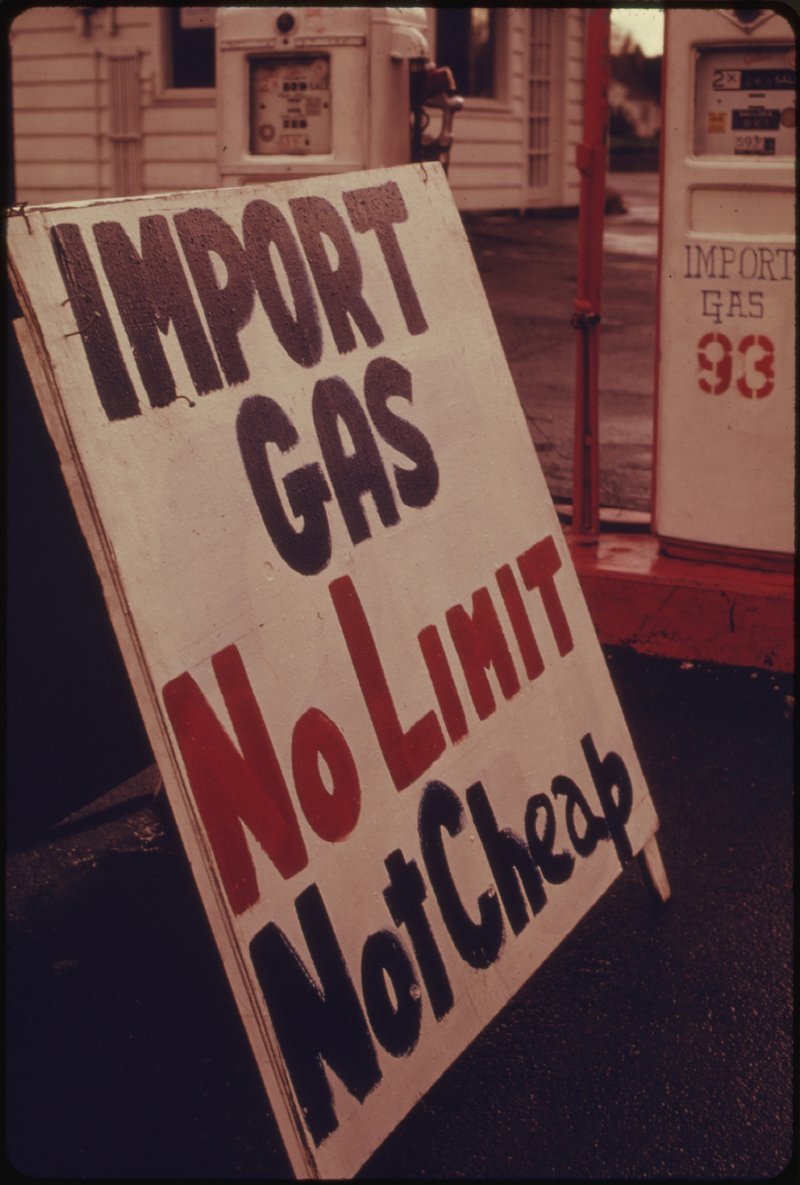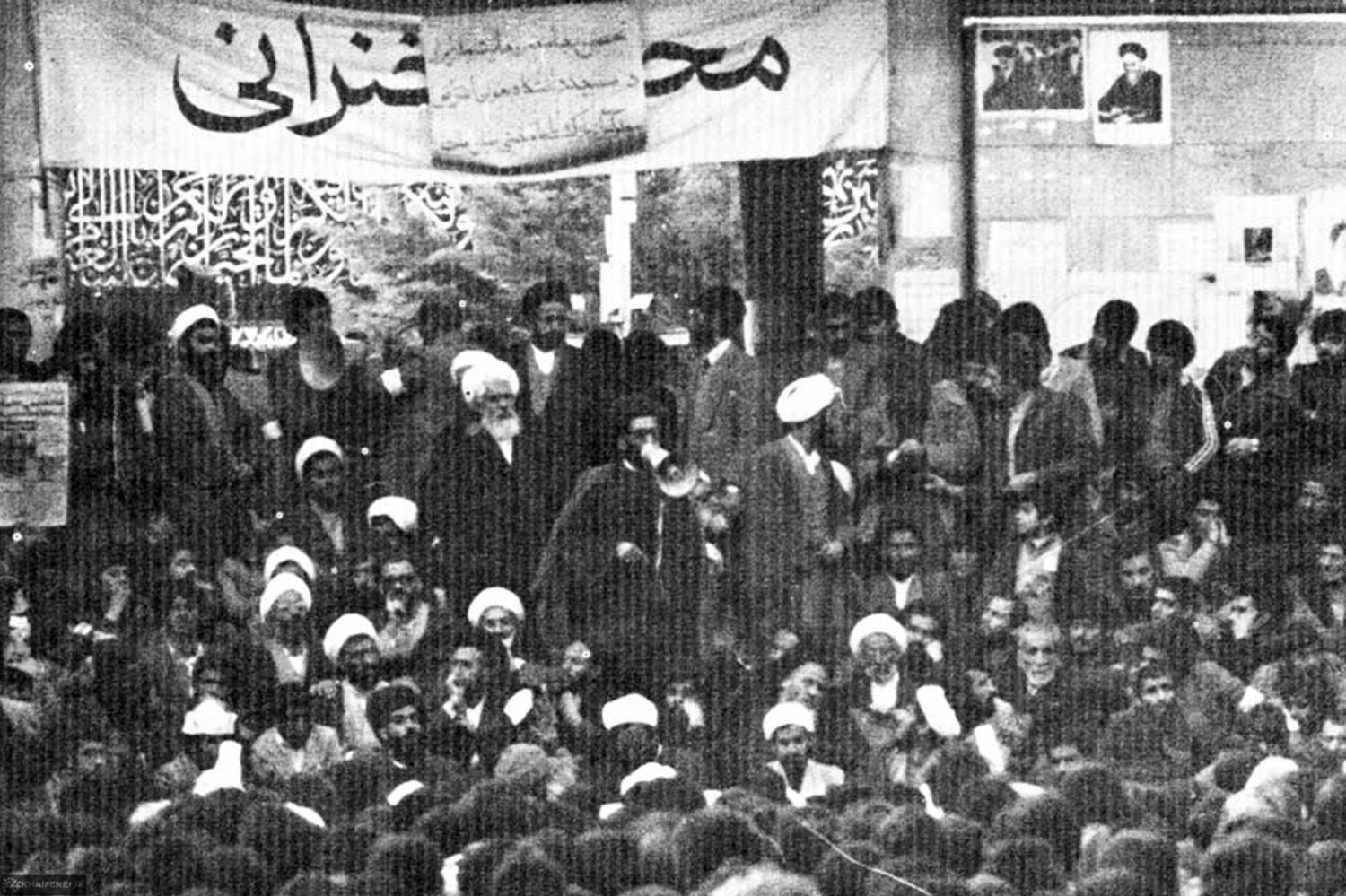
The 1970s, oh boy, what a ride! Commonly known as the “Seventies” or simply the “’70s,” this wasn’t just another decade on the calendar. Spanning from January 1, 1970, to December 31, 1979, it was a period historians now rightly call a “pivot of change” in world history. Get ready to experience a time when the world truly roared with transformations that reshaped global power, economics, and culture, all while setting the stage for everything that followed!
This era was a whirlwind of activity, marked by profound economic upheavals that kicked off right after the postwar boom fizzled out. We’re talking frequent coups, intense domestic conflicts, and civil wars sprouting up everywhere as decolonization continued to ignite new struggles. The global tug-of-war between NATO, the Warsaw Pact, and the Non-Aligned Movement played out across high-intensity conflict zones like Southeast Asia, the Middle East, Latin America, and Africa. It was a nonstop geopolitical rollercoaster!
But hold on, it wasn’t all just global turmoil and serious stuff. The ’70s also brought incredible social and technological leaps! Picture this: women in the Western world gaining more political awareness and economic freedom. And brace yourself for the quiet revolution that started with the Intel 4004 microprocessor in 1971, turning massive computers into something much more accessible. This decade truly packed a punch, blending despair with diplomatic triumphs, scientific marvels, and cultural explosions that are still influencing us today. Let’s dive into 7 of the most “loud & proud” moments that absolutely defined the unforgettable ’70s!

1. **The End of the Vietnam War (1975)**The 1970s kicked off with the United States still heavily enmeshed in the Vietnam War, a conflict that had already shaped a generation and sparked massive protests. The New York Times leaking information about the nation’s involvement intensified public pressure, driving the anti-war sentiment to a fever pitch and demanding an end to the protracted struggle that had consumed so much.
America’s eventual withdrawal from the war in 1973 was a monumental turning point, paving the way for the conflict’s definitive conclusion. The Fall of Saigon in 1975, marking the unconditional surrender of South Vietnam on April 30, was a moment etched into history. This dramatic conclusion triggered extensive evacuations of South Vietnamese, bringing a somber yet final chapter to a devastating and long-fought war.
The very next year, Vietnam was officially reunited, closing a complex and painful period in Southeast Asian history. This war’s end reverberated globally, influencing superpower dynamics and leaving the US in a “weakened position,” which ironically fueled the policy of détente with the Soviet Union. It was a truly “loud” moment, reshaping international relations and leaving an enduring legacy on how nations approach conflict.
Read more about: Rosalyn Drexler: A Polymath’s Legacy – Unpacking the Diverse Chapters of an Artistic Whirlwind Who Defied Categorization

2. **Watergate Scandal and Nixon’s Resignation (1974)**Talk about a scandal that rocked the nation to its core! Watergate, initially a seemingly minor break-in, spiraled into a colossal political drama that exposed a shocking web of political espionage, obstruction of justice, and abuse of power right at the top. It was the ultimate test of American democracy, capturing headlines and public attention like few events before it.
The relentless investigations and mounting evidence put immense pressure on then-U.S. President Richard Nixon, creating an unprecedented constitutional crisis. The nation watched in disbelief as the layers of deceit peeled back, revealing uncomfortable truths about leadership and accountability. The saga unfolded like a real-life thriller, making everyone question what was truly happening behind closed doors.
Then came the bombshell: on August 9, 1974, Richard Nixon did what no U.S. president had ever done before, resigning from office while facing impeachment charges. His departure was a profound moment of national reckoning, forever changing the American political landscape and sparking deep conversations about executive power and government transparency. It was a “loud” and unforgettable turning point for how we view political integrity!
Read more about: The 1970s: A Decade of Disappearance – 12 Shocking Moments When Leaders and Eras Vanished From the World Stage

3. **The 1973 Oil Crisis**The 1970s sure knew how to deliver a jolt to the global economy, and the 1973 oil crisis was a prime example! This massive economic shock was set off by oil embargoes from the Organization of Arab Petroleum Exporting Countries (OAPEC), sending industrialized nations reeling and creating immediate ripples across economies worldwide. Suddenly, energy wasn’t just a commodity; it was a weapon.
This crisis plunged many countries into a deep economic recession, as they grappled with skyrocketing energy costs and severe supply shortages. It was during this turbulent time that “stagflation” entered our vocabulary, describing that tricky combo of high inflation, stagnant growth, and rising unemployment. It truly flipped the script on traditional economic thinking.
More than just a hiccup, this event initiated a huge philosophical shift, pushing Keynesian economic theory aside for neoliberal policies. It even saw the first neoliberal government take power with the 1973 Chilean coup d’état. The 1973 oil crisis was a “loud” wake-up call about global energy security and interdependence, forever altering international economic relations and forcing everyone to rethink their reliance on precious resources.
Read more about: Feeling Hungry? 12 Chain Restaurants We’re Completely Avoiding to Save Your Wallet and Your Taste Buds

4. **The Iranian Revolution (1979)**Right as the decade was winding down, a monumental event in Iran exploded onto the world stage, sending shockwaves far beyond its borders. The Iranian Revolution of 1979 wasn’t just a leadership change; it utterly transformed Iran from a pro-Western monarchy under Shah Mohammad Reza Pahlavi into a radical theocratic Islamist government led by Ayatollah Ruhollah Khomeini. It was a game-changer!
This revolution marked a powerful new assertion of Islamic fundamentalism, introducing a whole “new wrinkle” into global geopolitics. The new regime wasn’t shy about declaring its hostility to both Western democracy and what it considered “godless communism,” creating an entirely new ideological force on the world stage. This shift immediately sparked intense international consequences.
The rising distrust between the revolutionaries and Western powers reached a boiling point with the infamous Iran hostage crisis on November 4, 1979. Sixty-six diplomats, mainly from the United States, were held captive for a staggering 444 days, capturing global attention and raising the stakes immensely. The Iranian Revolution profoundly reshaped global attitudes, solidified Iran’s regional power, and set the stage for future Middle East conflicts—a truly “loud & proud” moment of undeniable change.
Read more about: The 1970s: A Decade of Disappearance – 12 Shocking Moments When Leaders and Eras Vanished From the World Stage

5. **Rise of Female Leaders**The 1970s? Absolutely a powerhouse decade for women in politics, showcasing a global surge in political awareness and economic liberty! This was the era when an incredible number of women stepped up to become heads of state and government, many of them breaking barriers as the very first in their countries. It was a seriously “proud” moment for gender equality on the international scene!
Think about it: Margaret Thatcher became the first woman Prime Minister of the United Kingdom in 1979, kicking off an era of bold neoliberal economic policy and proving women could lead with an iron will. Across the globe, Isabel Perón made history as Argentina’s first woman President in 1974, and Indira Gandhi continued her powerful tenure as India’s Prime Minister. Not to mention Elisabeth Domitien in the Central African Republic and Maria de Lourdes Pintasilgo in Portugal also breaking ground.
These pioneering women were more than just leaders; they were living symbols of change, challenging old gender roles and demonstrating that women could absolutely steer national destinies. While traditional male roles largely persisted, the decade undeniably saw the “socioeconomic effect of an ever-increasing number of women entering the non-agrarian economic workforce,” reflecting broader societal shifts. Their rise to power was a clear, resounding, and “loud” declaration of progress that echoed worldwide.
Read more about: You Won’t Believe How These 13 Famous People Live Surprisingly Frugal Lives—From Billionaires to Hollywood Stars!

6. **Microprocessor and Computing Transformation**Beneath all the political drama, the 1970s was quietly forging a technological revolution that would change everything. It kicked off in 1971 with the appearance of the Intel 4004, the first commercial microprocessor. This tiny chip packed a massive punch, laying the foundation for a complete overhaul of how we interact with technology forever!
Before this groundbreaking invention, computers were “rudimentary, spacious machines,” typically confined to labs and large corporations. But the microprocessor signaled a radical shift, moving computing “into the realm of portability and home accessibility.” It was the genesis of our digital world, an unseen force that would eventually put powerful tech into every office, home, and pocket.
And it wasn’t just microprocessors! Physics saw “great advances,” too, with the consolidation of quantum field theory. We’re talking about confirming quarks and detecting the first gauge bosons like the Z boson and the gluon—all crucial pieces of what was dubbed the Standard Model in 1975. These scientific leaps, though not as “loud” as a rock concert, were “proud” intellectual triumphs that built the very fabric of our modern understanding of the universe.
Read more about: The Dragon’s Ascent: Unpacking China’s Modern Military and Expanding Global Reach by 2025

7. **The Yom Kippur War & Camp David Accords**The Middle East was anything but quiet in the early 1970s, igniting with a dramatic flare-up of violence. In October 1973, Egypt and Syria launched a surprise attack against Israel, kicking off the Yom Kippur War. Their goal? To reclaim territories lost in the 1967 conflict, and they initially caught the Israelis off guard, leading to heavy losses.
But Israel bounced back, managing to repel both the Egyptian offensive and a simultaneous Syrian attack in the Golan Heights. In a stunning turn of events, Israeli forces even crossed the Suez Canal into Egypt proper, escalating an already intense situation. This war vividly underscored the region’s complex geopolitics and the sky-high stakes involved for all parties.
Yet, the late 1970s brought a profound and unexpected shift through courageous diplomacy. In 1978, Egypt signed a historic peace treaty with Israel at Camp David, expertly brokered by President Jimmy Carter. These groundbreaking Accords aimed to resolve long-standing disputes, directly leading to the 1979 Egypt–Israel peace treaty. This “loud” moment of peace, earning Anwar Sadat and Menachem Begin the 1978 Nobel Peace Prize, offered a beacon of hope for stability in a volatile region. What a powerful close to a turbulent period!
Read more about: Israel and the Gaza Strip: A Deep Dive into Decades of Complex History and Contested Futures

8. **Africa’s Decolonization and Its Complex Aftermath**The 1970s saw a massive wave of decolonization sweep across Africa, fundamentally reshaping the continent’s political map. It wasn’t just about flags changing; it was a profound shift in global power dynamics! Nations like Angola and Mozambique finally broke free from the Portuguese Empire in 1975, a direct ripple effect of Portugal’s own Carnation Revolution. Imagine the excitement and the hope that came with such monumental declarations of independence, echoing across the continent as new nations proudly took their place on the world stage!
However, this newfound freedom often brought its own set of intense challenges. The departure of colonial powers frequently left behind power vacuums, sparking internal conflicts and civil wars across the newly independent Lusophone African nations. The transition was rarely smooth, with many regions grappling with the complexities of self-governance and the legacy of colonial divisions. It was a period of both liberation and significant turmoil, a truly “loud” chapter in Africa’s story.
Ethiopia, for instance, experienced a dramatic upheaval, witnessing the end of one of the world’s longest-lasting monarchies when Emperor Haile Selassie was overthrown in a military coup in 1974. This single event sent shockwaves through the region, highlighting the deep-seated political changes and power struggles erupting across the continent. Such internal transformations were often accompanied by external pressures and shifting alliances, creating an incredibly dynamic political landscape.
Beyond internal strife, some nations found themselves embroiled in cross-border conflicts. The Ugandan-Tanzanian War, lasting from 1978 to 1979, was a vivid example, driven by expansionist agendas and ultimately leading to the downfall of Idi Amin’s notorious regime. Meanwhile, the Ogaden War between Somalia and Ethiopia, fought from 1977 to 1978, highlighted intense regional disputes over territory and resources. These conflicts, while devastating, were also part of a proud, if painful, journey for African nations asserting their sovereignty and attempting to forge their own destinies in a complex global landscape, truly marking them as “loud & proud” in their struggle for self-determination.

9. **The Cambodian Genocide: A Horrific Chapter of the ’70s**As the 1970s unfolded, Cambodia became the scene of one of history’s most tragic and brutal episodes, a chilling reminder of the decade’s darker side. In 1975, the communist Khmer Rouge, led by the enigmatic Pol Pot, seized control of the capital, Phnom Penh. This wasn’t just a political takeover; it was the beginning of an unthinkable attempt to radically transform society into an agrarian utopia, but through the most horrifying means imaginable. The sheer scale of the vision was as extreme as its methods, aiming to reset the nation to “Year Zero.”
The Khmer Rouge immediately forced urban populations into rural areas to clear jungles and establish this new, radical Marxist society, believing city life was corrupt. What followed was a systematic and chilling campaign of torture and murder that targeted anyone perceived as a threat to their ideology. Buddhist priests, monks, intellectuals, those who spoke foreign languages, or even people wearing glasses – symbols of education or Western influence – became immediate targets. It was a terrifying assault on individuality, knowledge, and any form of independent thought, aiming to erase all traces of the past and rebuild from scratch, literally.
The human cost of this brutal regime was utterly devastating and almost incomprehensible. During their tyrannical reign from 1975 to 1979, the Cambodian genocide resulted in the deaths of as many as 3 million people. Think about that number – millions of lives extinguished in a relentless, brutal campaign of forced labor, starvation, and execution. This tragedy underscored the decade’s capacity for both monumental change and horrific human suffering, leaving an indelible stain on the fabric of Southeast Asian history.
The world watched, horrified, as this tragedy unfolded, struggling to comprehend the scale of the atrocities. Eventually, in early 1979, Vietnam invaded Cambodia, successfully overthrowing the Khmer Rouge and bringing a formal, though hard-won, end to this dark period. However, the scars on the nation and its people would remain for generations, serving as a powerful and “loud” warning about the dangers of unchecked totalitarian power and the devastating consequences of extremist ideologies. It was a stark, somber chapter in the otherwise bustling ’70s.

10. **The Soviet-Afghan War Kicks Off (1979): End of Détente**Just when we thought the decade was winding down, 1979 threw another massive curveball onto the global stage: the beginning of the Soviet-Afghan War. This wasn’t just a regional skirmish; it was a move that dramatically ended the era of “détente” – that careful period of eased tensions between the US and the Soviet Union – and reignited the fiercest fires of the Cold War! Talk about going out with a bang (literally!) and completely resetting the international chessboard.
On December 27, 1979, the Soviet Union made its decisive move, invading Afghanistan. Their primary aim was to support the communist government already in power, believing they could stabilize the region with a swift intervention. However, this intervention quickly spiraled into a complex, decade-long conflict that would have profound international consequences, far beyond Moscow’s initial expectations. It was a loud declaration of Soviet power, pushing their influence further into Central Asia and challenging the delicate geopolitical balance of the time. The world held its breath, wondering what this bold move would mean for East-West relations.
This wasn’t a contained conflict; it instantly drew in other global players, becoming a major proxy battleground for the two superpowers. The invasion marked a pivotal moment where the indirect faction of the US-Soviet rivalry escalated dramatically. American and Soviet intelligence agencies would pour resources into insurgent groups and armies across the globe, each aiming to gain a geopolitical advantage and install friendly governments. It amplified existing conflicts and created new ones, turning many smaller countries into arenas for superpower competition.
The Soviet-Afghan War, though largely fought throughout the 1980s, began with a thunderous roar in 1979. It forever altered the trajectory of the Cold War, demonstrating that despite the talks of peace and nuclear nonproliferation, the underlying ideological struggle was as potent as ever. This “loud & proud” assertion of Soviet will ultimately contributed to significant shifts in global politics and left a lasting impact on the region and the broader international community, truly solidifying the ’70s as a “pivot of change.”

11. **Disco Mania: The Sparkling Soundtrack of the Mid-to-Late ’70s**Get ready to boogie because the mid-to-late 1970s were all about one electrifying thing: DISCO! This wasn’t just a music genre; it was a full-blown cultural phenomenon, a vibrant subculture that absolutely exploded onto the scene and became the defining soundtrack for a generation across the globe. After all the heavy political drama, economic shifts, and global tensions, people were more than ready to dance, to celebrate, and to find pure joy on the dance floor.
Disco offered an exhilarating escape, a glittering world of pulsating beats, dazzling lights, and glamorous, often sequined, fashion. It was the ultimate expression of fun and freedom, creating spaces where people could let loose, forget their troubles, and embrace a sense of unity, even just for a night. The music, with its infectious rhythms, groovy basslines, and soaring vocals, filled dance clubs and radio waves, making everyone want to get up and groove, regardless of their background.
The popularity of disco peaked during these years, becoming a truly universal language that transcended borders and demographics. It provided a powerful counterpoint to the more somber aspects of the decade, allowing for moments of collective exuberance and shared celebration. From Studio 54 to local roller rinks, disco was everywhere, encouraging self-expression and community in a way few other movements could.
While the context primarily highlights its peak popularity, it’s clear that disco was more than just a passing trend; it was a social movement that brought people together. It provided a vibrant, inclusive space for self-expression and community, often attracting diverse crowds and becoming a symbol of unapologetic joy and collective celebration. The sheer energy and undeniable coolness of disco made it a truly “loud & proud” moment, leaving an indelible, glittering mark on the ’70s and beyond, reminding us that even amidst global changes, culture finds a way to shine brightly.

12. **China’s Global Re-emergence: A Diplomatic Game Changer**The 1970s was a truly transformative decade for the People’s Republic of China, marking its profound re-emergence onto the global stage after years of relative isolation. It was a diplomatic game-changer that reshaped international relations and global power dynamics! Imagine the excitement as one of the world’s oldest civilizations began to open its doors and assert its presence in an entirely new, incredibly impactful way.
A pivotal moment came early in the decade, specifically in 1971, when the representatives of the Republic of China (Taiwan) were expelled from the United Nations. This historic shift paved the way for the People’s Republic of China to take its rightful seat in the international body, a clear signal of its growing influence and recognition. This decision, in itself, was a massive step, altering the global diplomatic landscape instantly.
Then, in a move that truly stunned the world, U.S. President Richard Nixon made a groundbreaking visit to China in 1972, following earlier secret visits by Henry Kissinger in 1971. These high-level engagements weren’t just photo ops; they restored crucial relations between the two countries, effectively thawing decades of frozen diplomatic ties, although formal diplomatic recognition wouldn’t be fully established until 1979. It was a “loud” and clear signal that China was back in the global conversation, and the world had to take notice.
The internal landscape of China also underwent monumental shifts that fueled its external re-emergence. 1976 saw the deaths of both foundational leaders Mao Zedong and Zhou Enlai, ushering in the end of the Cultural Revolution and opening the door for new leadership and new directions. After a brief transition, Deng Xiaoping emerged as China’s paramount leader, skillfully steering the country towards market economics and away from rigid, ideologically driven policies. His subsequent visit to the U.S. in 1979 cemented China’s new global stance, demonstrating a “proud” new direction that would profoundly impact the world for decades to come, setting the stage for its modern economic powerhouse status.
13. **The Jonestown Massacre: A Dark Cult Tragedy That Shocked the World**The ’70s delivered its share of profound tragedies, and few were as chillingly unforgettable as the Jonestown massacre in November 1978. This wasn’t just an isolated incident; it was a horrifying climax to the story of the People’s Temple, a utopian Marxist commune led by the Rev. Jim Jones, established deep in the remote Guyanese jungle. What started as the promise of a perfect, communal society quickly devolved into a nightmare of absolute control, manipulation, and unspeakable abuse.
Allegations of severe corruption, mental, sexual, and physical abuse by Jones became impossible to ignore, raising grave concerns back in the United States. When a U.S. Congressional committee, including Congressman Leo Ryan, and a group of journalists decided to visit Jonestown to investigate these troubling reports, their mission tragically escalated into violence. As they attempted to depart Guyana, along with several disillusioned followers trying to escape the commune, they were brutally attacked and shot by Jones’ guards at the airport. Congressman Ryan was among those who lost their lives in this shocking and senseless act of violence.
What followed was an order from the “demented Jones” for everyone in the commune to commit suicide. Over 900 people, including approximately one-third children, either drank or were forced to drink cyanide-laced fruit punch, tragically known as Flavor Aid. It was a mass murder-suicide of unimaginable scale, leaving over 900 dead, with Jones himself found having shot himself. The U.S. military had to mobilize multiple units and deploy them to Guyana to recover the deceased, a somber, extensive, and costly operation that amounted to approximately $4.4 million in taxpayer dollars.
The Jonestown massacre remains a hauntingly “loud” and tragic reminder of the dangers of unchecked power, cult fanaticism, and extreme isolation. It sent shockwaves around the globe, prompting widespread soul-searching about communal living, religious extremism, and the vulnerabilities of followers to charismatic but malevolent leaders. This event solidified its place as one of the darkest human tragedies of the decade, a somber counterpoint to the era’s progressive movements and cultural explosions.

14. **The 1970 Bhola Cyclone: A Catastrophe of Epic Proportions**Talk about a devastating start to the decade! November 1970 unleashed one of the most horrific natural disasters in recorded history: the Bhola Cyclone. This wasn’t just a storm; it was a cataclysmic event that swept through the densely populated Ganges Delta region of East Pakistan (what is now Bangladesh), leaving behind unimaginable destruction and staggering loss of life. It was a “loud” roar of nature’s raw power, felt by millions and etched into the memory of a generation.
This incredibly powerful tropical cyclone, packing sustained winds of 120 mph (193 km/h), made landfall on November 12 and 13. The storm surge that accompanied it was immense, inundating vast areas and literally wiping entire coastal communities off the map. The sheer, relentless force of the wind and water was overwhelming, leading to a staggering death toll that underscored the extreme vulnerability of the region to such extreme weather events. It truly was a “pivot of change” in how the world viewed disaster preparedness and international humanitarian aid.
The human cost was beyond heartbreaking and difficult to fully comprehend. An estimated 500,000 people perished in the Bhola Cyclone, making it the deadliest tropical cyclone ever recorded in world history. This single, catastrophic event accounted for a significant portion of the total estimated 475 million deaths that occurred globally throughout the entire decade, highlighting its immense impact on the global population count.
This tragedy was a stark, “proud” (in the sense of raw, undeniable force) reminder of nature’s awesome power and the profound challenges faced by vulnerable populations. It forced a global reckoning with humanitarian response in the face of such overwhelming devastation, drawing international attention to the plight of communities in the Ganges Delta. The Bhola Cyclone stands as a profoundly tragic, yet incredibly impactful moment, forever marking the beginning of the 1970s with a somber, unforgettable chapter of human resilience and loss.
So there you have it, folks! From the ashes of war and the depths of political scandal to the electrifying beats of disco and the quiet revolution of microchips, the 1970s was truly a decade that roared with change. It was a time when the world was undeniably “loud & proud” with its transformations, both challenging and inspiring. Whether it was geopolitical chess, social awakening, or technological leaps, these years didn’t just happen – they actively shaped the world we live in today. What a phenomenal, unforgettable ride!




